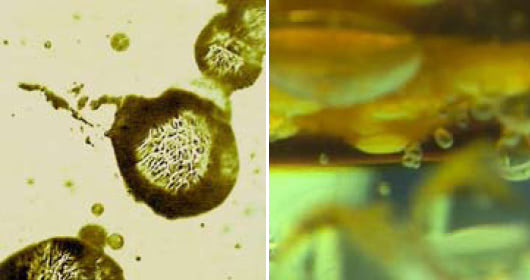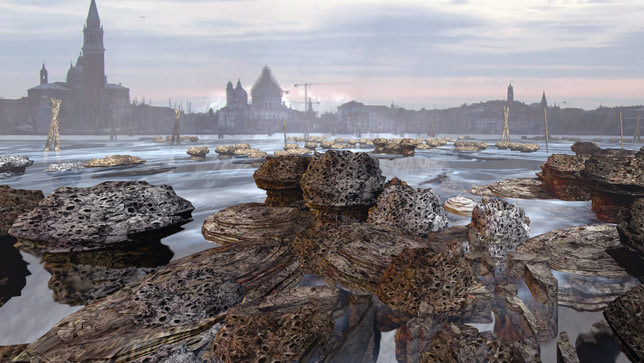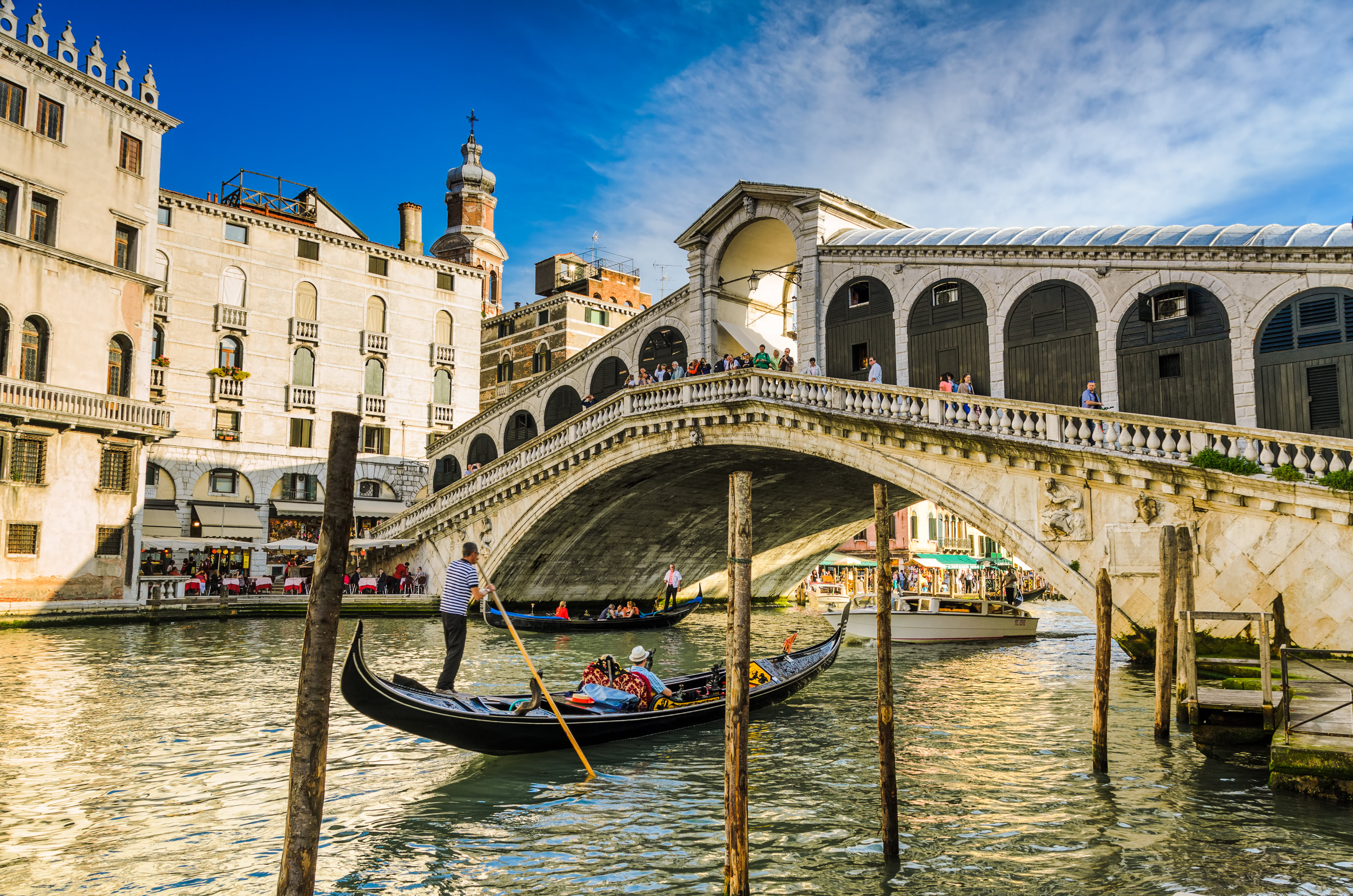All buildings today have something in common: They are made using Victorian technologies. This involves blueprints, industrial manufacturing and construction using teams of workers. All this effort results in an inert object, which means there is a one–way transfer of energy from our environment into our homes and cities. This is not sustainable.
I believe that the only possible way for us to construct genuinely sustainable homes and cities is by placing them in a constant conversation with their surroundings. In order to do this, we need to find the right language.
Metabolic materials are a technology that acts as a chemical interface or language through which artificial structures such as, architecture, can connect with natural systems. I am developing this technology in collaboration with scientists working in the field of synthetic biology and origins of life sciences whose model systems of investigation are materials that belong to a new group of technologies being described as ‘living technology’ (Bedau, 2009), which possess some of the properties of living systems but are not considered ‘alive’.
The characteristic of metabolic materials is that they possess the living property of metabolism, which is a set of chemical interactions that transform one group of substances into another with the absorption or production of energy. This transfer of energy through chemical exchange directly couples the environment to the living technology and embeds it within an ecosystem. Metabolic materials work with the energy flow of matter and systems using a bottom up approach to the construction of architecture.
Metabolic materials need water to chemically participate in an ecological landscape since they have not, developmentally speaking, reached the origins of life transition through which they are able to leave the water and adapt to ‘life’ on the land, bringing with them all the necessary support systems for survival on air.
Currently metabolic materials can be thought of as architectural symbionts since they coexist alongside structural materials and offer a medium through which a chemical dialogue between the classical architectural framework and the environment can take place. Metabolic materials may also be thought of as the next generation of architectural skins that are more than just decorative cladding but living integuments designed to give biological like functionality to building exteriors.
With further technological development metabolic materials may become autonomous structures and not dependent on existing infrastructures for ‘survival’. These continually recycling, auto-cannibalizing architectures would emerge from derelict building sites being shaped by their environmental context and responsive to changing urban land use.
Metabolic materials are able to carry out their dynamic functions without the need for DNA, which is the information processing system that biology uses. One specific example of agents that are capable of generating functional metabolic materials is protocells. These are dynamic oil in water droplets that are chemically programmable and exhibit some of the properties of living systems.

Protocell oil droplets are able to move around their environment, sense it, modify it and undergo complex behaviours, some of which are architectural. The architectural properties of protocells include the shedding of skins, altering the chemistry of an environment through their ‘waste’ products, the precipitation of solids, population based interactions, light sensitivity and responsiveness to vibration.
Protocells can be ‘programmed’ chemically to achieve particular outcomes. For example, is possible to create a ‘carbonate’ shell from insoluble carbonate crystals that are produced by protocells when they come in contact with dissolved carbon dioxide. Protocells can therefore produce a limestone like substance and artificially extend the development of this material (created by the accretion of the skeletons of tiny marine organisms), which can continue to grow, self-repair and even respond to changes in the environment. We are developing a coating for building exteriors based on this principle.
A practical example of how the first protocell based metabolic materials may inform architectures was developed for a series of collaborations with architect Philip Beesley where active protocells were engineered to be accessible for public display. Sargasso Sea [1], Hylozoic Grove [2] and Hylozoic Field [3] featured protocell ‘incubators’ that took the form of flasks of modified protocells reaching several centimetres in diameter.
A propositional relationship was created between the soft technology and the synthetic framework of the cybernetic field suggesting that living materials in the incubators would replace the inert scaffolding materials of the main exhibit.
A more intricate chemical landscape was designed to exist within a similar cybernetic framework at the Canadian Pavilion for the Venice Biennale, which is exhibited from September to November 2010 in Venice, Italy. The proposed chemical systems within this installation performed a functional and dynamic relationship both to the cybernetic installation and the human visitors.
The metabolic materials 'breathed in' carbon dioxide that was naturally dissolved in the water drawn from Venice’s canals and were able to demonstrate a carbon fixation process where the waste gas was recycled it into millimetre scale building blocks. In this way metabolic materials turned products of human activity into bodily components for the construction of Beesley’s giant synthetic ‘life form’.
Metabolic materials will challenge the assumptions that we have about architectural building processes and since they require water for their development they are likely to be useful in areas with repeated flooding or in urban areas that are lower than sea level or, as in the case of Venice, have a complex relationship with the sea. Protocell technology could stop the city of Venice sinking on its soft geological foundations by generating a sustainable, artificial reef under the foundations of Venice and spreading the point load of the city.


Protocell technology technology could stop the city of Venice from sinking on its soft geological foundations by generating a sustainable, artificial reef under its foundations. Computer renderings by Christian Kerrigan.
The speculative technology underpinning the construction of an artificial reef under Venice employs a species of carbon-fixing species of protocell technology that is engineered to be light sensitive. The protocell system would be released into the canals, where it would prefer shady areas to sunlight.
Protocells would be guided towards the darkened areas under the foundations of the city rather than depositing their material in the light-filled canals, where they would interact with traditional building materials and turn the foundations of Venice into stone. With monitoring of the technology, the woodpiles would gradually become petrified and at the same time, a limestone-like reef would grow under Venice through the accretion and deposition of minerals.
The issues involved with the reclamation of Venice are complex and this particular protocell based approach addresses just one aspect of a large range of factors that threaten the continued survival of the city.
However, other metabolic materials besides the protocell technology may have further potential to address other significant issues in this multifactorial situation, such as the very pressing problem of rising damp in the fabric of Venice's buildings where functional ‘seaweed wraps’ may be able to extract water from waterlogged traditional building materials and attenuate the ongoing significant damage caused by this process.
Metabolic materials may even be able to regenerate problematic areas within urban environments and contribute to regeneration by revitalising poor areas through carbon fixation methods. Not only would the buildings thrive on the carbon emissions from pollution but would add value to the buildings by recycling carbon into the fabric of the buildings the where metabolic materials would function as synthetic 'lungs' on building exteriors.
The regenerating buildings would become an integral part of the carbon and construction economies since the buildings would be able to perform useful functions and 'grow' as a result of sinking the waste gases into their substance and transforming these formerly toxic and undesirable environments into useful and even desirable locations.
In the next ten years additional functionality to these urban metabolic materials will go beyond carbon capture and storage so that these interfaces provide a site through which it is possible to recycle the captured carbon and produce fuels and other materials that have been created by further metabolic processing of the chemical systems. The recycled fuel could then be collected through systems within the ‘breathing organs’ (like air sacs within a lung) and reused within the architecture, consequently making more efficient use of oils and combusted substrates and providing further basis for a thriving economy.
Ongoing developments and engineering of metabolic materials even suggest that they will have a restorative effect on the environmental chemistry where the most effective way to ‘heal’ a stressed ecology may be to construct living buildings. In this case metabolic materials could be thought of as performing the role of environmental pharmaceuticals. These architectural interventions may not intend to provide housing for human inhabitants and merely exist in an environmentally restorative capacity where they would be difficult to distinguish from natural materials and accepted as an inherent part of our biological landscape.
Metabolic materials and living buildings will not only be able clean up the pollutants that we pump into the environment but will have the capacity to serve as a first line of defence against climate change and unpredictable environmental events since their sensors, intelligence and efforts are embedded in real environmental event not ones that are simulated using traditional computers.
Moreover, metabolic materials possess a language that is found everywhere on planet earth in the physics and chemistry of matter and this new approach to constructing architecture could benefit developing countries as much as First World nations. In this scenario our architectures would be able to serve as an early warning system for catastrophe in a manner similar to the potential of animals to sense impending disaster. In the advent of adversity, living buildings would be the first to respond to damage or detect human life within collapsed frameworks and in many ways they may come to be regarded as our architectural ‘best friends’.
References
[1] CITA collaboration for ‘Architecture and Climate Change’ exhibition, Royal Danish Academy, December 2009
[2] Quebec, February, 2010
[3] Mexico City, Festival of Mexico, March-April 2010
[4] Bedau, M. 2009 Living Technology today and tomorrow, Technoetic Arts, Volume Seven, Number Two, Intellect Journals, pp 199-206
Image: Shutterstock

Hendrick Marvel
I wanted and fought very hard to win the lottery that didn't come to pass until I found out about Dr Ozigidon Lottery spell. Dr Ozigidon is the real deal. My name is Hendrick Marvel, I'm from Ohio United states. I just want everyone to know about Dr Ozigidon, he helped me win a lot of money sometimes ago in lottery, I have played a couple of times and I have never won , I contacted him after watching a video of how he cure a woman of a deadly sickness. I told him I want to win the lottery and become rich to clear the debt I owe. He said if you can pay for the spell before the next draw, then consider yourself a millionaire. I had to loan money from a colleague to get the spell done. He gave me some lucky winning numbers, and he also instructed me on how to go about it, i played and i won $33,750,000 THIRTY-THREE MILLION, SEVEN HUNDRED, FIFTY THOUSAND DOLLARS, I have never seen such money all my life, but with the help of Dr Ozigidon, now I have that much, if you ever need help in getting lottery winning numbers to enable you win much money to pay for anything you wish for in life., do not hesitate to contact Dr Ozigidon, he did the unthinkable for me. contact him via his Email: drozigidonhenz.spell.net@gmail.com Whats , App. him now +2349054750112
Posted on
ggohdevubj
Muchas gracias. ?Como puedo iniciar sesion?
Muchas gracias. ?Como puedo iniciar sesion?
Posted on
Jonas braoudé
An other kind of living architecture is using mangrove roots in Madagascar. The project is called "the last wilderness" . Hope you'll enjoy. http://jonas-braoude.blogspot.fr/p/the-last-wilderness_30.html
Posted on
Elon
What are the prospects for using these protocells to repair coral atolls?
Posted on
Tony Hall
To progress from our industrial mind-set to developing an organic way of thinking about ourselves and learning to interact with our environments in a sustainable way, will probably take some shifts in language, these shifts can be helped by developing some hybrid examples that explore the stories of change .. maybe imagining how nomadic structures (portable buildings) could work with this emerging technology, or in buildings designed as shelters after disasters.
Posted on
Michael
So Venice is Victorian?
Posted on